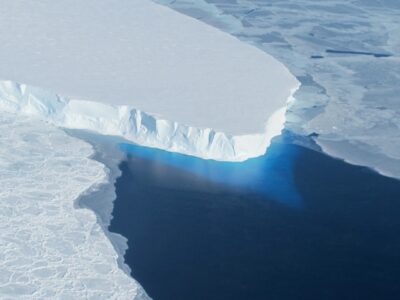Lamont-Doherty Earth Observatory was the site of a visit on March 25 from Richard Spinrad, the U.S. undersecretary for oceans and atmosphere and administrator of the National Oceanic and Atmospheric Administration (NOAA). During the daylong visit, Spinrad participated in a town hall and met numerous Columbia Climate School researchers to discuss projects that NOAA could potentially fund.
Before his nomination by President Joe Biden last year, Spinrad served for decades in multiple scientific leadership positions with the U.S. Navy, Oregon State University and NOAA, including a stint as NOAA’s chief scientist. He is an expert in ocean optics, and at one point ran a private oceanographic instruments company.

It was not Spinrad’s first visit to the campus. During the town hall, he recounted that during junior high school in Brooklyn in the 1960s, he decided to build a water depth sounder for an eighth-grade science project. His teacher sent him for advice to what was then called Lamont Geological Observatory. There, a graduate student spent several hours showing him around and helping him design a rudimentary instrument cobbled from off-the-shelf components. Spinrad tested it in the East River, and it was a total failure—but he learned from the experience, and it launched him on his career, he said. As a NOAA official in the early 2000s, he visited Lamont every few years to meet scientists and “kick the tires,” as he termed it, on funding proposals.
Lamont director Maureen Raymo noted that since 2000, dozens of Columbia researchers have received some $81million in NOAA grants, mainly going to Lamont-Doherty and the International Research Institute for Climate and Society, which was launched in 1996 with NOAA sponsorship.
The town hall, held at Lamont’s Monell Auditorium, began with a series of one-minute talks from researchers aimed at highlighting the breadth of Climate School work. Among others, Lamont scientist Galen McKinley outlined research to quantify the amount of carbon dioxide moving between oceans and atmosphere. Extreme-weather expert Suzana Camargo discussed advances in predicting tropical cyclones. Thaddeus Pawlowski, managing director of the Center for Resilient Cities and Landscapes, spoke about efforts to help coastal populations adapt to climate change. Pierre Gentine of Columbia Engineering discussed the assimilation of vast amounts of data from satellites and other sources to come up with the next generation of climate models. And Lamont climatologist Jason Smerdon discussed NOAA-funded research into the history of drought in the U.S. West; he noted that the latest findings, published in February, indicate the region is now enduring its worst drought since at least 800 AD, pushed in large part by warming climate.
In a 15-minute talk, Spinrad discussed his goal of making the United States a “climate-ready nation.” He said that we must “do a lot more than digging in our heels against climate change. We need to go beyond that, and make things better.” He said research must focus on “saving lives, livelihoods and lifestyles” by making communities ready to face multiple hazards including wildfire, drought, floods, heat waves and rising seas. He said he sees NOAA as “the connective tissue” for research into everything from upgraded building codes, planning for public health measures, and strengthening marine fisheries. “We’re in the business of environmental intelligence,” he said.

Spinrad emphasized the need to involve a wide variety of people from outside government to determine research needs. He said he has been in touch with scores of parties including Midwest farmers, Miami developers, the American Medical Association, the National Association of Realtors, major philanthropists, and tribal authorities. In coming years, many climate-related services will be provided by private companies, he predicted; he said NOAA is already working to help commercialize the information it produces.
Spinrad’s talk was followed by a question and answer period. Among other things, audience members wanted to know how NOAA-funded research could be aligned with environmental-justice goals; how it could be leveraged to help other countries adapt to climate change; and what opportunities the agency might have to work with organizations such as the United Nations and the World Bank.
After the town hall, Spinrad and his staff attended a series of meetings with staff from various parts of the Climate School to hear pitches for possible research projects, and wrapped up with a tour of the Lamont Deep Sea Core Repository.



